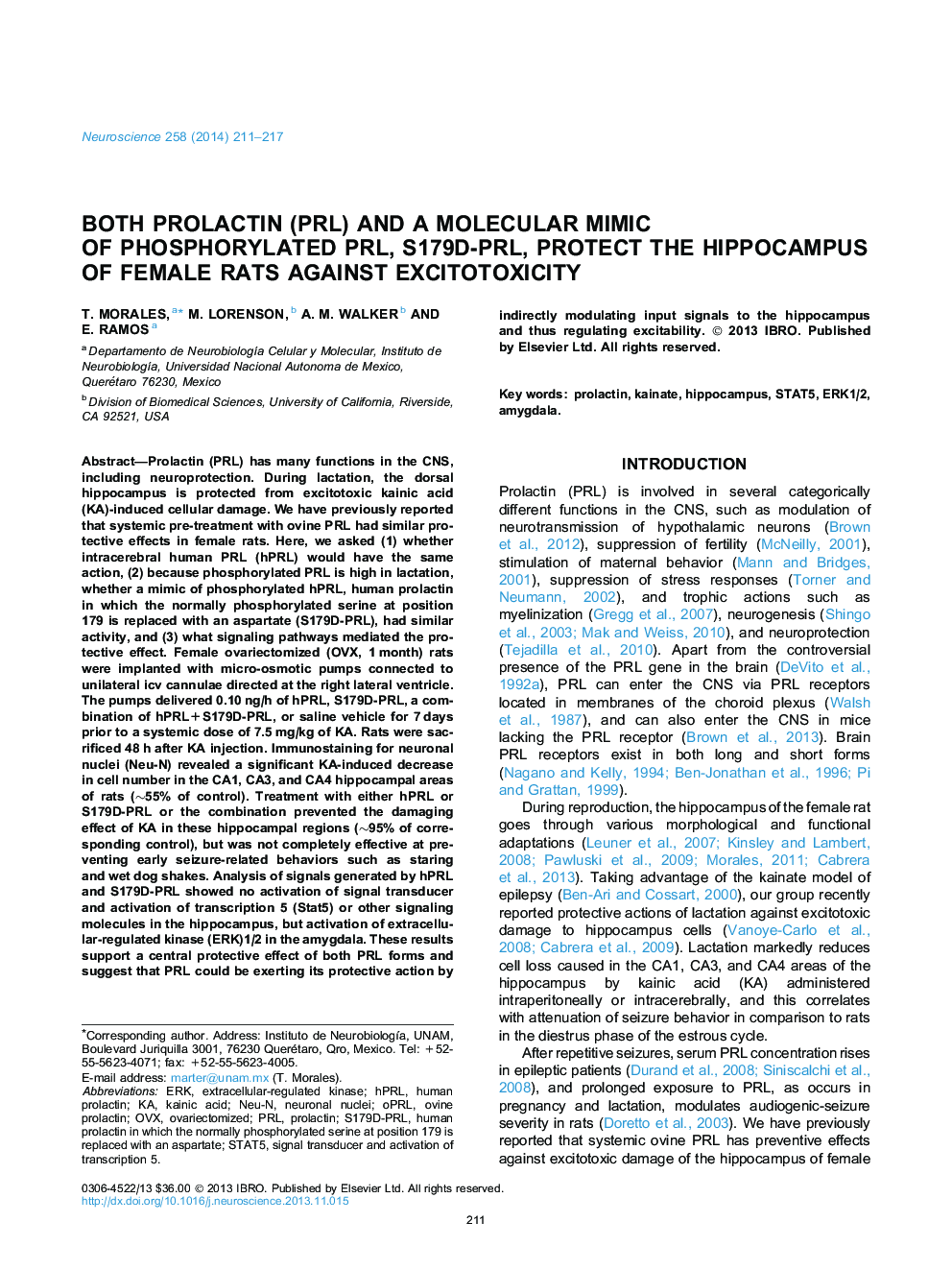| کد مقاله | کد نشریه | سال انتشار | مقاله انگلیسی | نسخه تمام متن |
|---|---|---|---|---|
| 4337772 | 1614818 | 2014 | 7 صفحه PDF | دانلود رایگان |

• We investigate the role of hPRL and a mimic of phosphorylated hPRL in neuroprotection against KA-damage in the hippocampus.
• Both forms of hPRL contribute to neuronal preservation in the hippocampus after an excitotoxic insult.
• Chronic hPRL or S179D-PRL decreased the progression of epileptoid behavior.
• Chronic hPRL or S179D-PRL activated ERK1/2 in the central amygdala, suggesting an indirect route of neuroprotection.
Prolactin (PRL) has many functions in the CNS, including neuroprotection. During lactation, the dorsal hippocampus is protected from excitotoxic kainic acid (KA)-induced cellular damage. We have previously reported that systemic pre-treatment with ovine PRL had similar protective effects in female rats. Here, we asked (1) whether intracerebral human PRL (hPRL) would have the same action, (2) because phosphorylated PRL is high in lactation, whether a mimic of phosphorylated hPRL, human prolactin in which the normally phosphorylated serine at position 179 is replaced with an aspartate (S179D-PRL), had similar activity, and (3) what signaling pathways mediated the protective effect. Female ovariectomized (OVX, 1 month) rats were implanted with micro-osmotic pumps connected to unilateral icv cannulae directed at the right lateral ventricle. The pumps delivered 0.10 ng/h of hPRL, S179D-PRL, a combination of hPRL+S179D-PRL, or saline vehicle for 7 days prior to a systemic dose of 7.5 mg/kg of KA. Rats were sacrificed 48 h after KA injection. Immunostaining for neuronal nuclei (Neu-N) revealed a significant KA-induced decrease in cell number in the CA1, CA3, and CA4 hippocampal areas of rats (∼55% of control). Treatment with either hPRL or S179D-PRL or the combination prevented the damaging effect of KA in these hippocampal regions (∼95% of corresponding control), but was not completely effective at preventing early seizure-related behaviors such as staring and wet dog shakes. Analysis of signals generated by hPRL and S179D-PRL showed no activation of signal transducer and activation of transcription 5 (Stat5) or other signaling molecules in the hippocampus, but activation of extracellular-regulated kinase (ERK)1/2 in the amygdala. These results support a central protective effect of both PRL forms and suggest that PRL could be exerting its protective action by indirectly modulating input signals to the hippocampus and thus regulating excitability.
Journal: Neuroscience - Volume 258, 31 January 2014, Pages 211–217